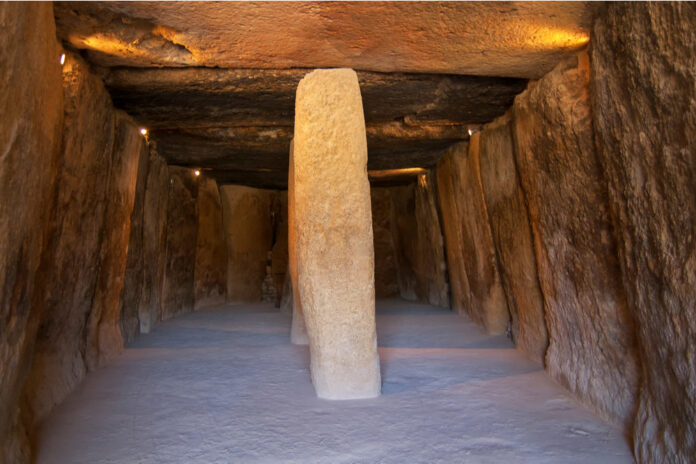An undiscovered megalithic dolmen has been uncovered in the province of Malaga.
In the municipality of Antequera, the prehistoric burial chambers of Menga Dolmen feature some of the largest and most complete megalithic mounds in all of Europe. This week, a new unidentified ancient structure has been uncovered and is understood to be older than Menga Dolmen itself.
In a bid to “preserve the integrity of the site” and to prevent “possible vandalism”, the exact whereabouts of the dolmen has not been made public.
Experts from the University of Sevilla with leadership from Professor Leonardo Garcia Sanjuan made the discovery on Monday, September 14th. It was uncovered after the team found a “very old” structure during their research into the Megalithic Complex of Antequera.
The discovery was confirmed by mayor of Antequera Manuel Barón along with deputy mayor delegate for Historical Heritage, Ana Cebrián, and for World Heritage, Juan Rosas.
The structure was once used as a sacred space for Neolithic communities before the Menga Dolmen was built, it is believed.
Additional studies into the creation of 5000-year-old Menga Dolmen and the processes that led to it are expected. The site became part of the UNESCO World Heritage list in 2016 and is considered an “outstanding example of megalithic architecture”.
The Menga Dolmen is understood to be Europe’s biggest megalithic chamber, measuring almost 30m long, six metres wide and 3.5 metres high. It’s largest upright stone is 180 tonnes with the heaviest stone at Stonehenge weighing 40 tonnes.
The summer solstice sun shines straight through the Menga Dolmen’s entrance corridor, over the peak of the Peña de los Enamorados.





